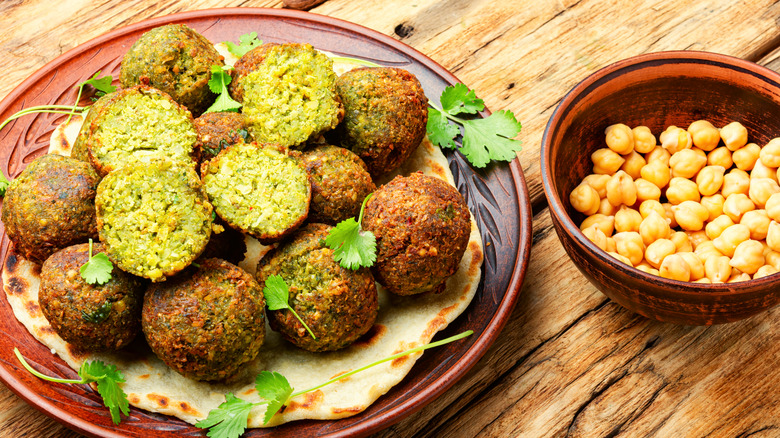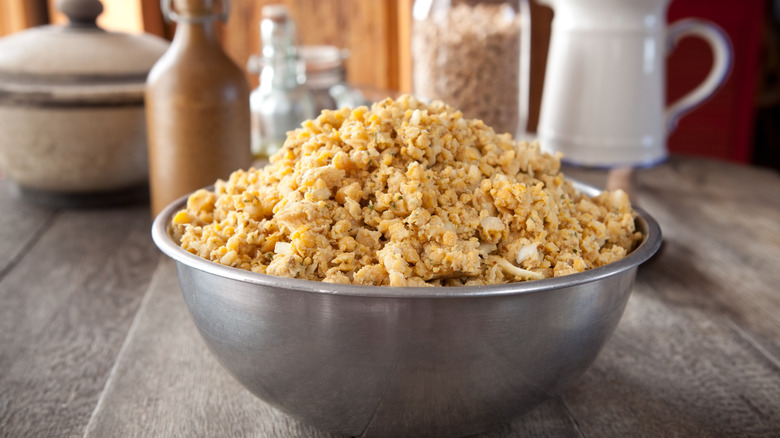The Chilling Step You Shouldn't Skip When Making Falafel
A good falafel, whether baked or fried, is crispy on the outside and light, fluffy, and moist on the inside. A notable textural contrast like this is as important, as its multifaceted flavor which itself is a tricky balance of numerous spices, aromatics, and herbs. A key step to achieving the best taste and texture lies in chilling falafel balls before cooking them.
Similar to chilling cookie dough, leaving freshly mixed falafel batter to rest in the fridge for at least half an hour will fortify their form and integrate their flavors. A common problem with falafel batter is that it loses its shape during the cooking process, crumbling as it hits the hot oil, or spreading and cracking in the oven.
By letting the falafel batter sit in the fridge, the cold, dry air will help the mixture dry out, which simultaneously concentrates the flavors and hardens the falafel's oils for a more stable and sturdy consistency. You can refridgerate the covered batter as a solid mass or form the batter into balls before placing them on a baking sheet in the fridge. Once you take them out, an extra drizzle of oil will ensure that their insides remain moist as they bake. You can also freeze pre-rolled balls for days or weeks before throwing them in the oven or fryer without thawing them.
More tips to ensure optimal form and texture
While it's tempting to use canned chickpeas for falafel batter, any falafel expert will tell you that's a recipe for disaster. Canned chickpeas have been pre-cooked and conserved in brine, rendering them both too soft and too moist to create a cohesive falafel batter. Dried chickpeas are the quintessential foundation for successful falafel balls. While they require at least an overnight soaking period, you don't have to boil or pressure cook them after the soak.
Soaked chickpeas offer the perfect semi-hard texture while still retaining all their starches, which translates to a cohesive and fluffy interior as they cook in hot oil. Another tip for fluffy interiors is to add a bit of baking powder to the batter before forming the balls and cooking them.
While frying the falafel in oil will create an airy and moist interior and perfectly crispy exterior, the key to achieving this textural contrast is maintaining a precise temperature; If the oil is too hot, the falafel will crumble, but if it isn't hot enough, then the edges won't crisp up. Using a thermometer to ensure that the temperature remains constant will ensure success (the target temp is between 360 and 375 degrees Fahrenheit). Frozen falafel balls hold their shape especially well in the fryer. If you bake or air fry your falafel balls, brush them with an even coat of olive oil before baking them so that their interiors don't dry out as they cook.

